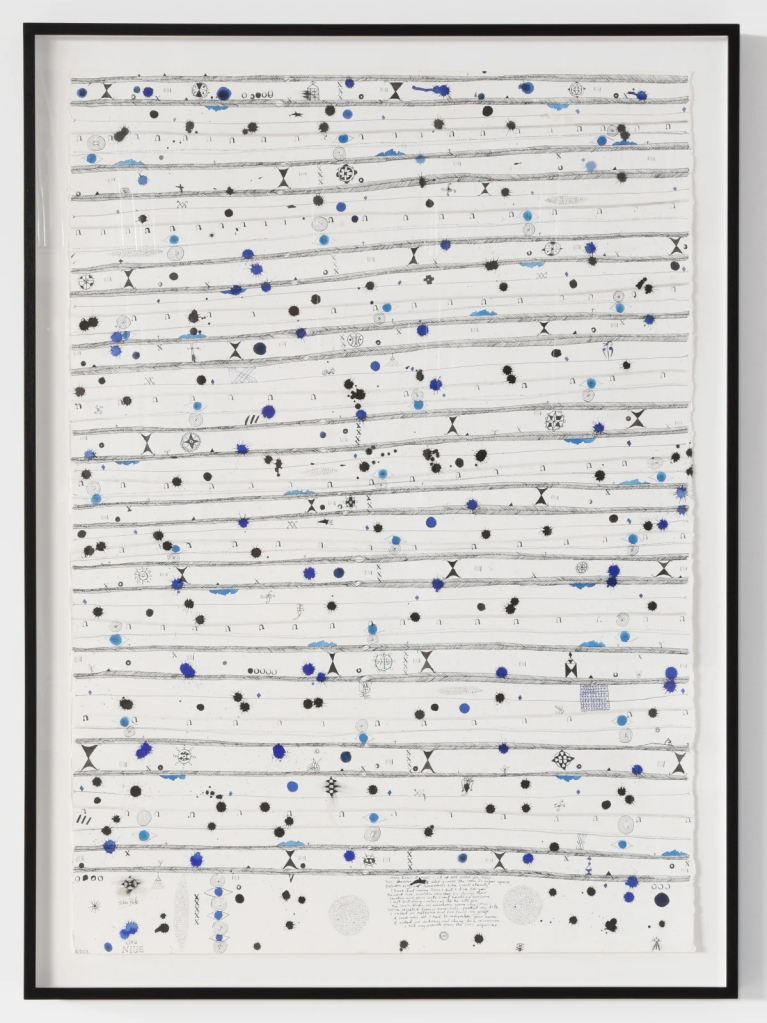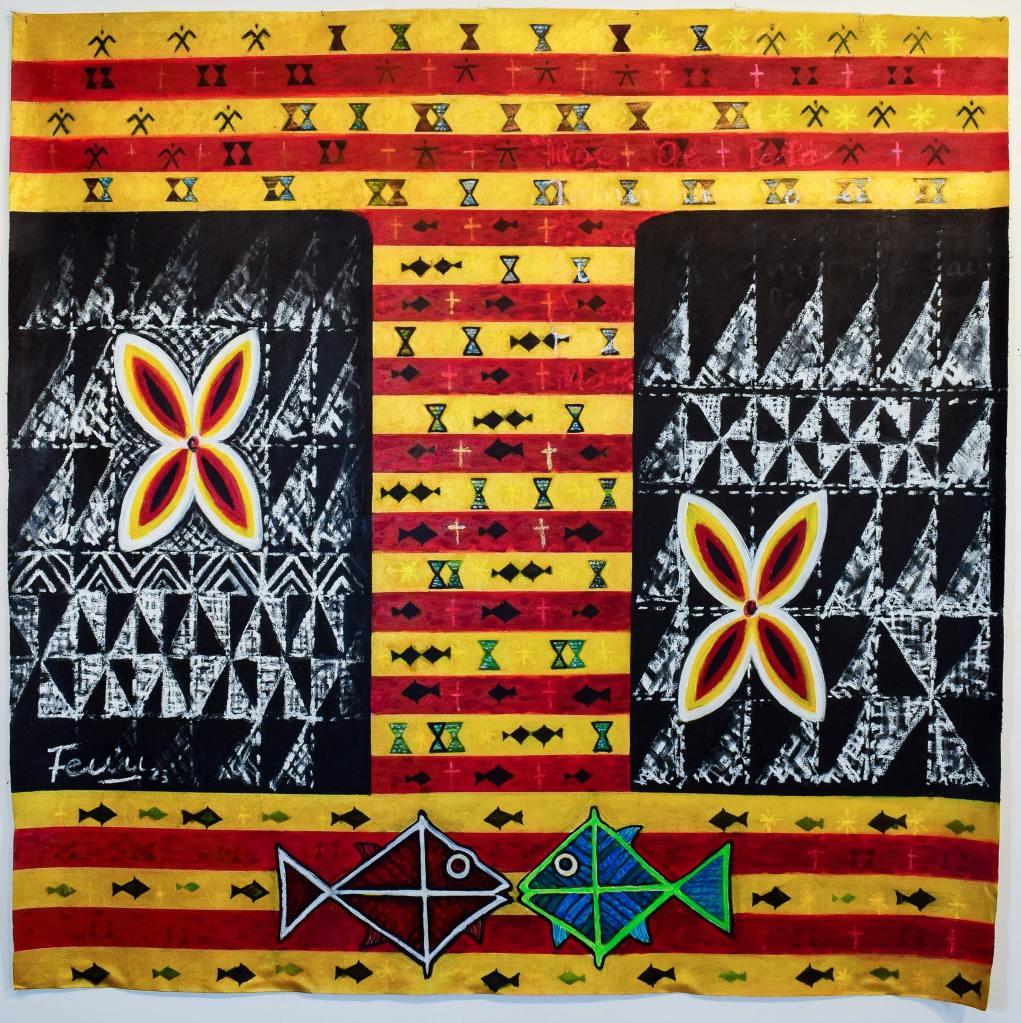Reviewed by John Daly-Peoples

Haia
John Pule
Gow Langsford, Onehunga
Until June 8
Vai Manino
Fatu Feu’u
Artis Gallery
Until June 9
Reviewed by John Daly-Peoples
Two recent exhibition by Pacific artists focus on the ways in which artists draw on the physical and topographic and historic , merging them, with social, political and personal insight and visions.
John Pule’s latest exhibition “Haia” was the result of a nine-month residency in Niue provided by the government in 2023. The work contains much of the artist previous iconography but have a greater immediacy given the artists response to in his ancestral land.
The works are in a sense both a discovery and rediscovery of the land and its mythologies as well as the artists own journeys.
As he says in his notes to the exhibition
“For nine months I rode my bike each day through the canopy forest from Liku to Alofi [around 15 kilometres]. Through rain or shine, winds, storm, or calm. The road is bordered with plantations, forests, tracks into the interior. Big blue skies and clouds, shadows of trees stretch across the makatea (limestone) road. Returning to Liku every evening, the sun is warm on my back. These paintings and drawings are about that particular time.”
His works have often dealt with his growing up in New Zealand, his discovery of traditional Niuean art, the islands history, flora and fauna and developing his own iconography. This had led to him dealing with wider issues of colonialism, the impact of Christianity as well as the mythology and spirituality of Niue.

Works such a “Many times at night I sit up and watch you sleep” with their strips of images – symbols, shapes and figures are like the trails that that the artist has ridden on his bike but also the pathways which reach back in time. They are analogous to the songlines of aboriginal art as well as the lines of musical compositions, imagining the way the sounds evolve, carrying a narrative expressing joy. sorrow and wonderment.
In the more dramatic paintings such as “As we stood one misty morning near the ocean the desire the solitude gone gone forever” a road snakes into the distance and there are several figures depicted recalling tales of the Bible and other mythological histories.
The foliage depicted is at once colourful and local as well as surreal and mythological – a portrays of Pule’s Niue as well as an imagined paradise.
The pathways and journeys depicted in his paintings are metaphors for the artist’s own physical, spiritual and aesthetic journeys.

Other works such as “Foulua Pukenamo Tau Misi” feature plans, grids and designs – locating islands, stars, measuring winds and sea currents, all ways of comprehending the environment

In his latest exhibition “Vai Manino” (Clear Water) Fatu Feu’u focusses on the social political and historical aspects of Samoan fisheries with works that follow on from his previous exhibitions which have addressed social, political and environmental issues which are confronting Samoan society. Several are based on the Samoan tradition of ‘ifoga’ or reconciliation/rebuilding with the dominating central letter ‘I’ as a motif captures this, with different colours coalescing. The large “I” which he has used many times before also references Colin McCahons use of the letter / symbol.
His work draws inspiration from ancient designs and patterns – from tapa cloth. siapo, lapita pottery and tattoo along with contemporary Samoan design. There are also the influences of abstract art and that of other artists such as Colin McCahon and Tony Fomison. The artist has employed shapes and symbols that he has developed over many years – masks, fish, birds and sails along with hints of human figures and landscape. Many of the siapo patterns themselves are derived from insects, leaves, shells, animals and fish.

In many of the works such as “First Ritual” there are swirls of colours which seem to reference shoals of fish and the ocean currents along with curving lines which can indicate the trawling nets used by fisherman.
Works such as “Pacific Conference II” have more complex structures with reference to the historical and mythological past pf the Pacific with an Easter Island monolith. The swarms of fish which morph into humans and birds refence journeys, distance and the dependence on the sea.

Like the works of John Pule several of the paintings feature bands of colour representing journeys and histories. And with both artists there are gridded area which are related to cartography, structure and measurement
To subscribe or follow New Zealand Arts Review site – www.nzartsreview.org.
The “Follow button” at the bottom right will appear and clicking on that button will allow you to follow that blog and all future posts will arrive on your email.
Or go to https://nzartsreview.org/blog/, Scroll down and click “Subscribe”.